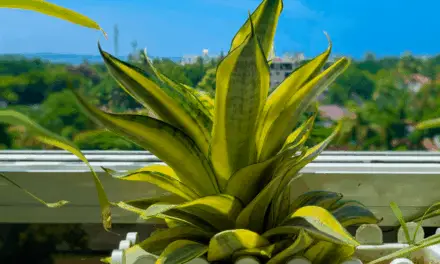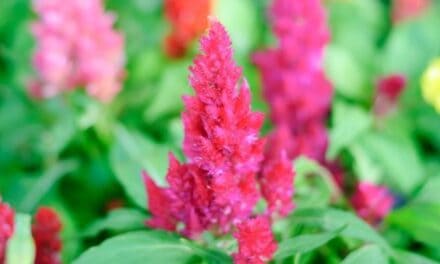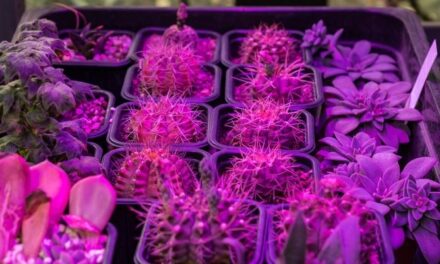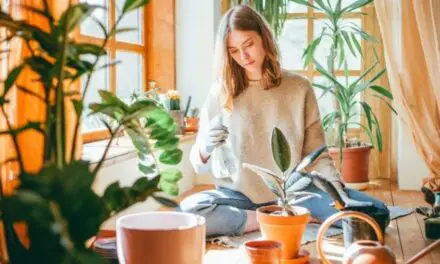If you’d like to elegantly decorate your home or office, Calathea plants are the way to go.
Most Calatheas have vibrant, colorful green leaves with dark shades of purple, brown, and red on their leaves’ undersides.
Some species (eternal flame plant) even produce gorgeous orange-yellow flowers on stalks that can be up to 2 feet long.
These plants prefer indirect light, making them a perfect fit for most indoor environments.
But Calatheas are known to be a bit on the fussy side and if they aren’t watered to their liking, they may begin to droop and look unwell.
Table of Contents
Why Is My Calathea Drooping?
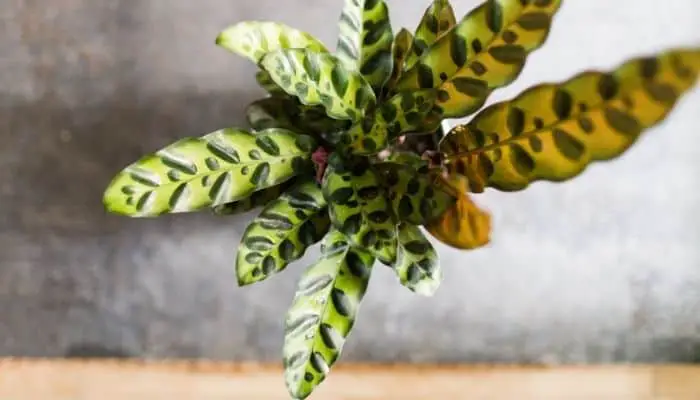
Your Calathea is drooping because it needs water. This plant has quite animated foliage, and its leaves will soon begin to droop and curl inwards when thirsty.
But be careful that you’re not mistaking the natural movement of your Calathea’s leaves for drooping.
The leaves of this plant will naturally move around when adjusting to the level of light in its environment.
Calatheas are also known to draw their leaves inward during the nighttime hours and extend back out in the morning to reach the rising sun.
Some mistake this natural movement of the leaves for drooping but it’s no cause for concern.
Sometimes you may even catch these movements out of the side of your eye and feel as though your plant is trying to wave at you or somehow get your attention.
Let’s look closer at some of the most common reasons why your Calathea is dropping and what you can do to revive it!
How To Water Your Calathea Properly
If you think it is drooping because of thirst, be sure to feel the soil first just to make sure.
When a Calathea is thirsty, its leaves will start to wilt and the plant will appear as though it’s drooping.
But it’s also important to check the soil so you don’t risk overwatering your plant.
Calatheas like their soil to be evenly moist on a consistent basis at all times (but never waterlogged or soggy).
If the top two inches of soil feels dry then it’s time to water your plant.
If the soil dries out too much, you may notice the leaves browning, yellowing and drooping.
Depending on how much light and heat your plant is getting, water it roughly every 1 to 2 weeks and allow the soil to dry out halfway down before watering again.
Water it a little more in brighter environments and less in lower-light environments.
Make sure to stick to a regular watering schedule to keep the plant healthy.
If the soil wasn’t dry but the Calathea leaves still appear wilted, then you may have mistaken the plant’s natural movement with drooping.
As mentioned, the leaves of a Calathea follow the light, which causes them to move up and down.
This is why the plant may appear healthier during the day than in the evening.
How To Revive A Drooping Calathea Plant
The great thing about Calathea plants is that it’s fairly easy to bring these plants back to a healthy state when they begin to droop.
Don’t Underwater Or Overwater
These plants will need to be watered once every 1 to 2 weeks.
The best way to know when they could use another drink of water is to test the soil.
A good drink of water can help a drooping Calathea bounce back.
Don’t allow the soil to dry out completely, instead make sure it has dried out approximately halfway before watering again.
It should be ready for more water when it is no longer moist beneath the soil’s surface, ideally allowing 2 inches of soil to dry out.
Calatheas do best when they have soil that is consistently moist.
Move Your Calathea To A Brighter Spot
Calatheas should be kept in a spot that receives medium to bright indirect light but avoid placing it in direct sunlight as it can damage the plant’s leaves.
You should also rotate the plant every once in a while for even growth on all sides.
Calatheas also like temperatures of between 65 to 80 F and don’t like cold drafts or when temperatures dip below 55 to 60 F.
Increase Humidity
The leaves of your Calathea may begin to droop if there isn’t enough humidity in its environment.
These plants are tropical, which means they thrive in humid environments.
If you live in an area with low humidity and notice your plant’s leaves drooping, you can help bring it back to life by creating a more humid environment for the plant.
If you have a humidifier, that could really help.
A very easy way to instantly create more humidity for a Calathea is by misting its leaves with water.
This is a great way to prevent the leaves from becoming dry between waterings.
It’s not necessary to soak the Calathea leaves, a light misting is just the right amount to keep the plant from drooping.
Use The Right Potting Soil
For your Calathea to grow to its fullest potential and not droop, its soil should remain moist.
Be careful not to wet the soil too much and also to not allow it to become bone-dry.
Be sure to use a pot with drainage holes and well-drained soil.
It’s usually recommended to mix orchid bark with a regular indoor potting mix.
Fertilize Your Calathea
Your Calathea will be less likely to droop if it has been fertilized correctly.
Since it is a houseplant, it needs to be fertilized from spring through fall.
If you give your Calathea an organic fertilizer specific for houseplants once a month, along with regular watering, you’ll be less likely to have to deal with a drooping Calathea.
Repot Your Calathea
As your plant grows, it’s important to repot it according to size.
Your plant needs room for its roots to grow, and enough soil to stay healthy.
A bigger pot also allows room for enough water, which will help to keep the plant from drooping or wilting.
Ideally, your Calathea should be repotted in a pot that is 1 or 2 inches bigger each year.
Final Thoughts
By following along with this guide and caring for your Calathea well, you are unlikely to experience it drooping.
The most common cause is usually dehydration.
Make sure the plant is on a proper watering schedule to prevent this from occurring.
Luckily Calatheas a hardy enough plant to start thriving again once they get a drink of water.
However, make sure you don’t overwater your plant as this could make things way worse by causing root rot and a lot more damage to your plant.

